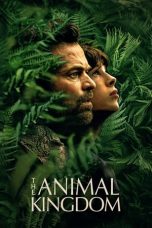- Source: Ngel Nyaki Forest Reserve
The Ngel Nyaki Forest Reserve, whose site is historically known as Majang, is situated on the Mambilla Plateau in North East Nigeria, covering 46 km2. It can be reached on foot from Yelwa village past the Mayo Jigawal, from where it is less than half an hour’s walk to the upper edge of the forest. The elevation ranges from 1,400 metres (4,593 ft) to 1,600 metres (5,249 ft). Ngel Nyaki was formally gazetted a local authority Forest Reserve under Gashaka - Mambilla Native Authority Forest order of April 1969, but presently it is under the management of the Taraba State Government and the Nigerian Conservation Foundation (NCF), with the Nigerian Montane Forest Project (NMFP) as a project partner.
In November 2014 a long term monitoring vegetation plot was established in the reserve, funded by Nigerian philanthropist Theophilus Danjuma and, administered by the Nigerian Montane Forest Project. The research plot is part of the Center for Tropical Forest Science (CTFS) global network operated through the Smithsonian Tropical Research Institute.
Vegetation
The reserve contains a stand of rare dry type montane to sub-montane forest, and is the only forest of its type left on the heavily populated Mambilla plateau. The forest is an isolated fragment of approximately 7.5 km2. The forest is diverse in species composition, amongst the most floristically diverse montane–submontane forest stands in Nigeria, and has many tall emergents (e.g. Aningeria altissima, locally exclusive to this forest). Four tree species are Red Data listed (Entandrophragma angolense, Lovoa trichilioides, Millettia conraui, Aningeria altissima), and several, such as Anthonotha noldeae are new to West Africa and others new to Nigeria. An illustrated checklist of the flora of Ngel Nyaki Forest Reserve has been created.
Climate
The Ngel Nyaki Forest Reserve has a tropical climate, classified as Am according to the Köppen-Geiger climate classification. This means that it has a consistently warm temperature, with no distinct winter season.
The average annual temperature in the forest reserve is 20.2 °C | 68.3 °F. The hottest month is March, with an average temperature of 22.5 °C | 72.6 °F. The coldest month is August, with an average temperature of 18.3 °C | 65.0 °F.
The forest reserve receives significant precipitation throughout the year, with an average annual rainfall of 3969 mm | 156.3 inches. The wet season runs from May to November, with the highest rainfall occurring in May and October. The driest month is January, with an average rainfall of only 4 mm | 0.2 inches.
Due to its proximity to the equator, the forest reserve does not experience a distinct winter season. Temperature variations are not extreme throughout the year, with the temperature fluctuation between the coldest and warmest months being approximately 4.2 °C | 7.6 °F.
Relative humidity levels in Ngel Nyaki Forest Reserve vary throughout the year, with the highest humidity occurring in August (88%) and the lowest humidity occurring in January (29%).
August has the highest number of rainy days (22 days), while December has the fewest rainy days (0.77 days).
Ngel Nyaki Forest Reserve receives an average of 3069.31 hours of sunlight per year, with a monthly average of approximately 101.06 hours. The sunniest month is January, with an average of 10.51 hours of sunlight per day, while the cloudiest month is August, with an average of 5.31 hours of sunlight per day.
The climate of the forest reserve, is characterized by consistently warm temperatures, significant precipitation throughout the year, and high humidity levels. The wet season runs from May to November, with the highest rainfall occurring in May and October.
Fauna
Ngel Nyaki is home to a population of the rare and endangered Nigeria-Cameroon chimpanzee, Pan troglodytes subsp. ellioti. It is estimated that the chimpanzee population in the forest comprises a single interbreeding community of 11–13 adults.
Other primates including putty-nosed monkey (Cercopithecus nictitans), mona monkey (Cercopithecus mona) and tantalus monkey (Chlorocebus tantalus) also inhabit the forest. Birds such as turacos, the Cameroon olive-pigeon (Columba sjostedti), double-toothed barbet (Lybius bidentatus) and green bulbul are common.
Freshwater crayfish belonging to the genus Astacopsis are found abundantly in the forested streams.
Ngel Nyaki has been classified as an Important Bird Area by Birdlife International. Species of interest include the IUCN vulnerable Bannerman's weaver (Ploceus bannermani), and the near threatened Crossley's ground-thrush (Zoothera crossleyi). 158 bird species were recorded on the Mambilla Plateau between 13 November – 22 December 2003 by Tony Disley, many of them were within Ngel Nyaki Forest Reserve.
Conservation Status of Ngel Nyaki Forest Reserve
= Biodiversity and Ecological Significance
=Ngel Nyaki Forest Reserve is a critical habitat for a wide range of flora and fauna. It is home to a diverse array of plant species, including many endemic and rare ones. Likewise, it supports a variety of wildlife, including mammals, birds, reptiles, and amphibians. Some of the species found in the reserve may be threatened or endangered, making the conservation of this area particularly important.
= Threats
=a. Deforestation and Habitat Degradation: One of the primary threats to the Ngel Nyaki Forest Reserve is deforestation, which occurs due to activities like logging, agricultural expansion, and infrastructure development. This not only leads to the loss of biodiversity but also disrupts the delicate ecological balance of the area.
b. Illegal Logging and Poaching: The reserve may face challenges from illegal logging, which further exacerbates deforestation. Additionally, poaching of wildlife for various purposes, including bushmeat and illegal trade, poses a threat to the resident fauna.
c. Climate Change: Climate change can impact the reserve's ecosystems by altering temperature and rainfall patterns, potentially affecting the distribution and behavior of various species.
= Conservation Efforts
=a. Protected Area Status: Ngel Nyaki Forest Reserve is designated as a protected area, which means it has legal status and certain regulations in place to safeguard its biodiversity.
b. Community Engagement: Involving local communities in conservation efforts is crucial. This can be through education, awareness campaigns, and providing alternative livelihoods that reduce dependency on activities that harm the reserve.
c. Law Enforcement: Strengthening law enforcement measures to combat illegal activities such as logging and poaching is essential for protecting the reserve.
d. Research and Monitoring: Conducting scientific research and monitoring programs helps in understanding the dynamics of the ecosystem, which is crucial for informed conservation decisions.
e. Reforestation and Habitat Restoration: Efforts should be made to restore degraded areas through reforestation and habitat restoration projects.
f. Climate Resilience Planning: Developing strategies to help the ecosystem adapt to changing climate conditions is increasingly important.
= Collaborative Initiatives
=Collaboration between governmental bodies, non-governmental organizations, local communities, and international partners is often crucial for the successful conservation of areas like Ngel Nyaki.
= Challenges
=a. Funding and Resources: Conservation efforts often require significant financial and logistical resources.
b. Political and Socioeconomic Factors: Political instability or conflicting socioeconomic interests can sometimes hinder conservation efforts.
c. Lack of Awareness: Creating awareness about the importance of conservation among the public, especially local communities, is an ongoing challenge.
How to get to Ngel Nyaki Forest Reserve
Ngel Nyaki Forest Reserve is closest to Jalingo Airport, but it is not an international airport. So, international visitors typically fly to Lagos International Airport first.
To go from Jalingo Airport to Ngel Nyaki Forest Reserve, head east towards Jalingo Arpt for 120 meters. Merge onto Jalingo-Mutum Biyu Rd/A4 and continue for 3.1 kilometers. Turn right at the intersection and continue on Kurnah-Sanberu-Dongari Tiv Rd for 137 kilometers. At the next roundabout, take the second exit onto Bali-Gayam Rd/Mambila Plateau Rd. Follow Mambila Plateau Rd for approximately 165 kilometers. The route takes you through the scenic landscape of the Mambila Plateau. Eventually, you'll arrive at Ngel Nyaki Forest Reserve.
In other words, you can fly to Jalingo Airport and then drive to Ngel Nyaki Forest Reserve. The drive takes about 4 hours and 41 minutes.
= Future Outlook
=The long-term conservation of Ngel Nyaki Forest Reserve depends on sustained efforts, effective management, and a holistic approach that takes into account the needs of both the environment and the people who depend on it.
References
Kata Kunci Pencarian:
- Ngel Nyaki Forest Reserve
- Natural areas in Nigeria
- Mambilla Plateau
- Taraba State
- Wildlife of Nigeria
- Nigeria-Cameroon chimpanzee
- Cameroonian Highlands forests
- Cameroon olive pigeon
- Yola, Nigeria
- University of Canterbury
The Angel Maker (2023)
Kali: Avenging Angel (2024)
Hot Fuzz (2007)
The Secret World of Arrietty (2010)
The Animal Kingdom (2023)
No More Posts Available.
No more pages to load.














